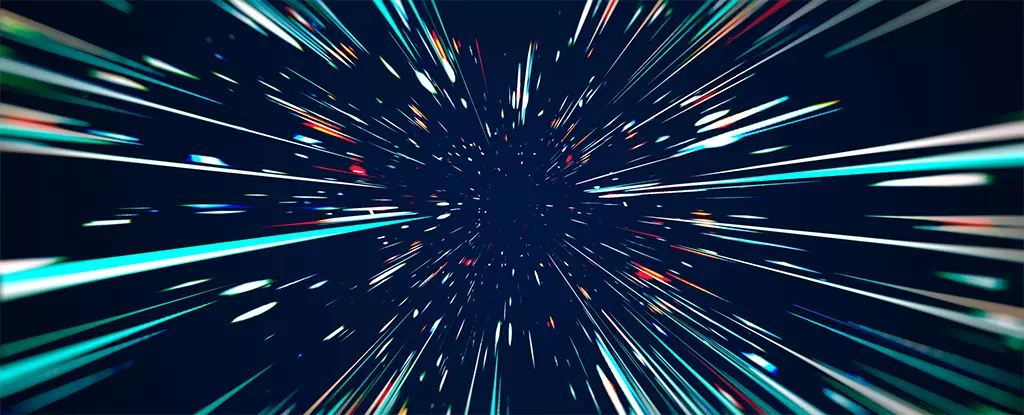The concept of warp drives has always been a staple in science fiction, allowing spacecraft to travel faster than the speed of light by warping spacetime. While it may seem far-fetched and rooted in fantasy, recent scientific research has delved into the theoretical possibilities of such technology. A new paper titled “What no one has seen before: gravitational waveforms from warp drive collapse” by physicists Katy Clough, Tim Dietrich, and Sebastian Khan explores the science behind warp drives and the potential emission of detectable gravitational waves in the event of a containment failure.
Warp drives are not solely confined to the realms of science fiction, as they have a foundation in general relativity. Physicist Miguel Alcubierre proposed the concept of warp drives in 1994, describing how they could theoretically function without violating the speed of light barrier. By distorting spacetime itself through the creation of a warp bubble, a spacecraft equipped with a warp drive could traverse great distances at speeds faster than light.
Despite the intriguing possibilities of warp drives, there are several scientific barriers that must be addressed before they can become a reality. One major obstacle is the requirement of a Null Energy Condition (NEC), which posits that regions of space cannot possess negative energy density. While there are theoretical workarounds to this condition, practical implementation remains challenging. Additionally, issues such as closed time-like curves and the difficulty of controlling the warp bubble present significant challenges to the feasibility of warp drives.
One fascinating aspect of warp drives is the potential emission of gravitational waves, similar to those generated by binary mergers of compact objects like black holes and neutron stars. In the event of a warp drive containment failure, the collapse of the warp bubble could emit gravitational waves with distinct characteristics, different from those produced by standard mergers. While the current frequency range of ground-based detectors may not capture these signals, proposals for higher frequency detectors could enable the detection of such events in the future.
The exploration of warp drives and gravitational waves opens up a realm of possibilities for future research and discovery. While the practical implementation of warp drives remains a distant goal, advancements in our understanding of fundamental physics, dark matter, and dark energy could pave the way for potential breakthroughs. If extraterrestrial intelligences have mastered the art of warp drives, their activities could generate detectable gravitational waves that future observatories might capture, transcending galaxies and expanding our knowledge of the universe.
While the concept of warp drives remains a theoretical and speculative endeavor, the study of their potential implications on gravitational wave emissions provides a fascinating glimpse into the intersection of science fiction and scientific inquiry. Further research and exploration are necessary to shed light on the feasibility and detectability of warp drives in the vast expanse of the cosmos. As physicists continue to unravel the mysteries of the universe, the possibility of warp drives and their gravitational wave signatures stands as a testament to human curiosity and the relentless pursuit of knowledge.


Leave a Reply